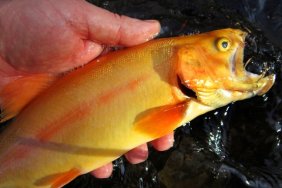
Smart bass fishermen know that there are a few staple lures they’ll want to keep in their tackle boxes at all times. Lures that make noise are definitely on this list, too. There are dozens of different types of bass attracting noisemakers out there, but why exactly do noisy lures draw strikes?
How Do Bass Hear?
Unlike humans, bass have two ways of detecting sounds—their inner ear and their lateral line (a system of sensory organs usually visible as a faint line running lengthwise down each side, from the vicinity of the gill covers to the base of the tail)—which work independently of one another to detect sound waves and pressure changes in the water.
There are many bass baits on the market that offer built-in sound, ranging from crankbaits with internal rattles to flipping jigs with affixed noise chambers. Anglers can also add sounds to otherwise silent baits by adding a rattling worm weight to their Texas-rigged soft plastics.
Where to Throw Noisy Lures
Noisemaking lures work best in heavy cover, such as thick vegetation, where bass’ vision will be dramatically decreased and they’re forced to rely on their hearing to alert them to prey. Work your loudest flipping jigs and plastics here, making sure to exaggerate the movement of your bait to make the most sound possible. It may take time, but fish will eventually hone in on your lure.
Stained or muddy water also warrants a bit more noise from your lures. Similar to fishing heavy cover, noise will be a big factor when water clarity is low, rather than lure action or color. Docks and undercut banks are other structure areas where loud baits can make all the difference. Fish tend to be found far under these structures, meaning bass need to hear your bait before finding it. Be sure to give your bait extra time in the strike zone to allow the fish more time to locate it.
Not All Noisy Lures are Created Equal
With all different types of lure sounds available on the market, it’s smart to make a mental note of which baits bass prefer. For instance, there are many different brands of lipless crankbaits on the market, and while they may all look similar in appearance, the sounds they make will differ and fish will react accordingly. Watch and interpret which baits the fish prefer and try to mimic that sound and action with other lures in your tackle box. Check out this video showcasing how effective rattling crankbaits can be.
Photo credit: Flickr Creative Commons








